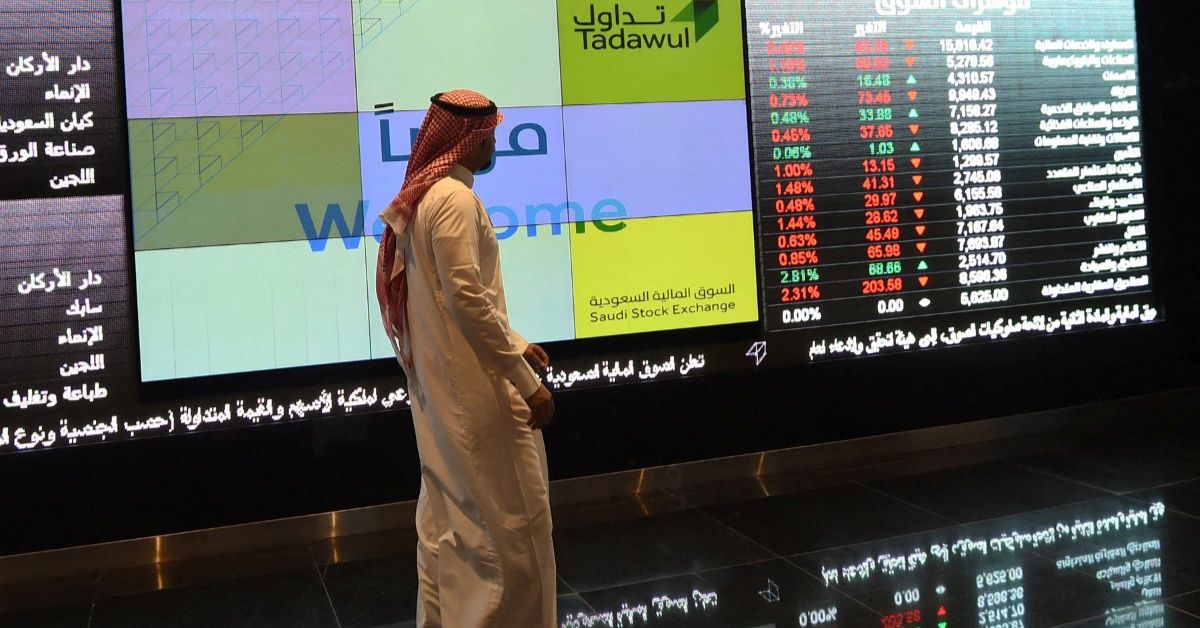KUWAIT CITY — The GCC region is home to some of the world’s most profitable companies. In recent years, GCC corporations have benefited from robust economic growth, high oil prices, and a favorable regulatory environment. However, the region is not immune to global economic challenges, and corporate earnings have shown mixed results in recent quarters.
Quarterly profits reported by GCC-listed companies once again demonstrated a year-over-year decline in profits during Q3-2023, primarily due to a drop in energy and commodity prices.
According to a new report by Kamco Invest, most global commodity prices saw a decline during the quarter, which was also reflected in the approximately 10 percent decrease in the Bloomberg Commodity Index since the beginning of 2023.
Furthermore, the average Brent spot price was down 14 percent in Q3-2023 compared to Q3-2022, impacting the profits of listed energy companies in the GCC, including Aramco.
At A Glance GCC Corporate Earnings Overview * Mixed results in recent quarters despite strong economic growth and high oil prices. * Q3-2023 saw a year-on-year (y-o-y) decline in profits, influenced by falling energy and commodity prices. Sector-Specific Performance * Energy and commodity sectors faced declines, with average Brent spot price down 14% y-o-y. * Banking, telecom, and real estate sectors showed resilience with healthy growth. * Capital goods and F&B sectors, and utilities sector impacted by higher financing costs. Profit Trends * Q3-2023 aggregate net profit for GCC-listed companies was US$62.3 billion, a 14.4% y-o-y decline. * The performance was mixed across sectors. Twelve sectors declined while 10 showed profit growth. * Country-specific trends varied: Saudi Arabia and Abu Dhabi saw double-digit declines, while Kuwait, Dubai, and Oman reported significant growth. Quarterly and 9-Month Earnings Analysis * Q3-2023 profits increased 7.7% quarter-on-quarter (q-o-q), with notable growth in Oman and Dubai. * 9M-2023 profits declined steeply, largely driven by Saudi-listed companies. * Energy sector's 9M-2023 profits declined by 23.4%, while banking, real estate, and telecom sectors saw growth. Sectoral Insights * Energy sector: steep y-o-y decline in Q3-2023 but q-o-q growth due to higher prices. * Banking sector: benefited from higher interest rates and resilient project market. * Materials sector: significantly affected by global economic slowdown and lower commodity chemical volumes. * Utilities and diversified financial sectors faced sharp profit falls, while real estate showed substantial y-o-y gains.
A decrease in profits for the capital goods and F&B sectors also contributed to the overall decline, while profits for the utilities sector were affected by higher financing costs, as reported by the two largest players in the sector.
On the other hand, the banking sector’s profits remained resilient, registering healthy quarter-over-quarter and year-over-year growth as lending increased in most markets despite higher interest rates. The telecom sector also reported higher year-over-year profits, as did the real estate sector during Q3-2023.
Aggregate net profit for GCC-listed companies reached US$62.3 billion during Q3-2023, compared to US$72.9 billion during Q3-2022, resulting in a double-digit year-over-year decline of 14.4 percent.
The report indicated that out of the 22 sectors in the region, profits for 12 sectors showed year-over-year declines, while 10 sectors reported higher profits. At the country level, aggregates for Saudi Arabia and Abu Dhabi showed double-digit declines compared to last year, while Bahraini companies experienced a decline of 8.3 percent.
On the other hand, Kuwait displayed the most significant year-over-year earnings growth, exceeding 40 percent during Q3-2023. Dubai and Omani aggregates also showed robust growth of 35.8 percent and 24 percent, respectively.
The aggregate for Qatari companies was nearly flat, with a marginal year-over-year growth of 0.3 percent. In terms of quarter-over-quarter performance, aggregate GCC profits increased by 7.7 percent in Q3-2023, led by double-digit profit growth for companies listed in Oman and Dubai, while Saudi and Qatari companies exhibited slightly smaller growths of 9.8 percent and 7.2 percent, respectively.
Conversely, Bahrain, Kuwait, and Abu Dhabi listed companies reported quarter-over-quarter declines in profits.
Regarding quarterly sectoral earnings performance, the Energy sector experienced a sharp year-over-year decline of 20.2 percent, or by US$8.8 billion, totaling US$34.9 billion during Q3-2023. However, in terms of quarter-over-quarter performance, the sector saw a profit increase of US$4 billion or 12.8 percent, reflecting higher average prices during the quarter compared to Q2-2023.
The banking sector demonstrated healthy quarter-over-quarter and year-over-year growth in profits during Q3-2023, reflecting the region’s higher interest rates as most central banks followed the rate hikes by the US Federal Reserve. The sector continued to see lending growth during the quarter despite higher interest rates, mainly due to the resilient projects market in the region. Real estate lending also remained strong, particularly in the UAE.
In terms of nine months-2023 earnings performance, the decline in profits this year was significant at US$37.8 billion and was almost entirely driven by a decrease in profits in Saudi-listed companies by more than a quarter or US$42 billion, while Qatari and Bahraini companies showed relatively smaller absolute declines compared to nine months-2022.
These declines were partially offset by double-digit earnings growth in Dubai and Kuwait, while Oman and Abu Dhabi aggregates exhibited slightly smaller year-over-year growth during nine months-2023.

In terms of sectoral earnings performance during the nine months of 2023, the most significant impacts were primarily from the energy, materials, and capital goods sectors. These were partially offset by higher profits mainly in the banking and telecom sectors.
Profits for the energy sector declined by US$31.2 billion or 23.4 percent during nine months-2023, totaling US$102 billion. Meanwhile, the materials sector experienced a decline in profits of US$12.1 billion or 80.4 percent, amounting to US$2.9 billion, compared to US$15 billion during nine months-2022.
The materials sector was directly affected by the global economic slowdown and lower volumes in the commodity chemicals business.
Utilities and diversified financial sectors also reported a sharp fall in profits during nine months-2023. In contrast, the real estate sector showed year-over-year gains of more than a third compared to the previous year.
Profits for the banking sector increased by US$6.9 billion or 20.8 percent, reaching US$40.3 billion in nine months-2023. Additionally, real estate and telecom companies exhibited profit growths of US$1.4 billion and US$1.3 billion, respectively, totaling US$5.7 billion and US$8.1 billion.







